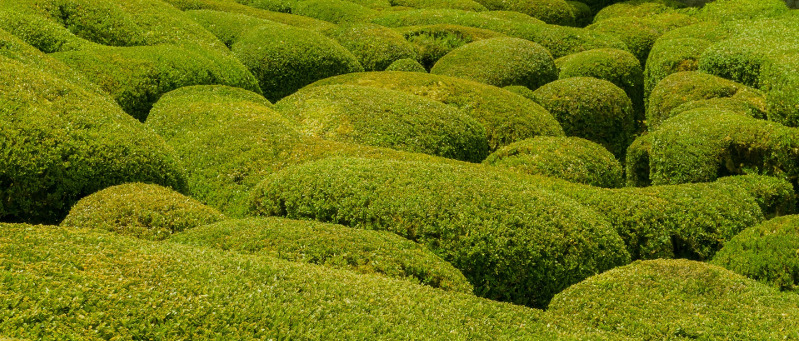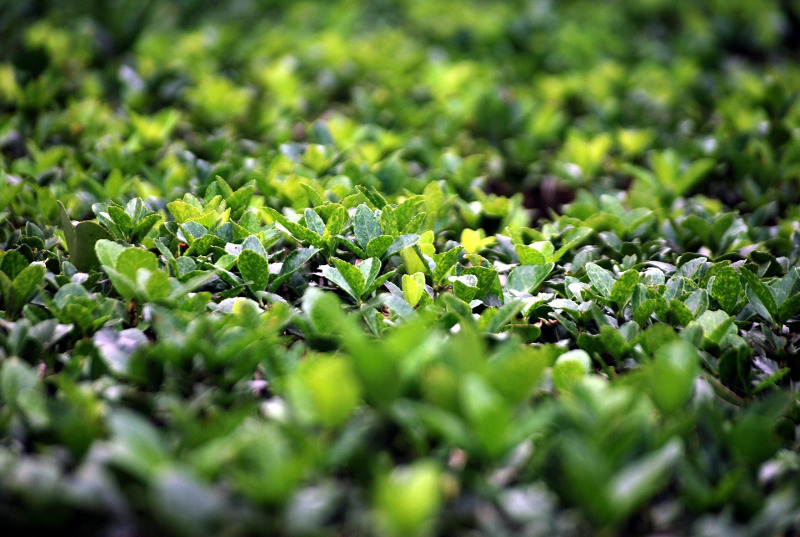Boxwoods typically do not need regular fertilizing, but a few times a year, your shrubs might need a boost. Here are some tips on the best food for your boxwood, along with when and how to apply fertilizer.

When & Why to Fertilize Boxwood
Boxwoods benefit most from some fertilizing in spring to promote green growth or in late fall to promote root growth over winter. And know when not to add fertilizer: It's never a good idea to fertilize boxwoods in the heat of summer, late in summer, or in winter. Fertilizing in late summer, before cool fall temperatures, can harm the plant by forcing new leaf growth just before winter cold and dormancy.
Best Fertilizer For Boxwood
Slow-release, balanced fertilizers are best for boxwood, and a granular form of urea fertilizer 10-6-4 is recommended. You also can use aged manure or cottonseed meal if your plant appears healthy, as long as you are making sure your boxwood has plenty of nitrogen. Lack of nitrogen shows up as yellowing of the shrub's lower leaves. If that occurs, be sure to use urea or a balanced fertilizer with a little more nitrogen (N).
If your soil is not ideal (you can find out its pH through a soil analysis; check with your local cooperative extension office), you might need to adjust your food choice or add another soil nutrient. For example, if your soil's pH is below about 6, add some dolomitic lime. You shouldn't need to add the lime every time you fertilize; it remains active in the soil for years. But retesting the pH can tell you if you need to add more. If your pH is too high, try some iron sulfate to lower the level.
How to Apply Fertilizer to Boxwood
Try these tips for safely applying fertilizer to your boxwood:
-
Apply the fertilizer around the entire diameter of root growth. That means a few feet out from the area below the top (bushy canopy) of the plant. The roots you can't see reach out further than your shrub.
-
Follow package directions for amount and apply the fertilizer evenly.
-
Follow the concept of "less is best" to start and add a little more next time if all goes well.
-
If you use a drip system for watering, be sure to place your fertilizer near the drip line; that is where roots likely have grown to and enables the water to carry the food down to roots.

Over Fertilizing Boxwoods
Overfertilizing can cause more damage than no fertilizer at all. Don't let the granules come in contact with the actual roots or leaves. If you see your boxwood's pretty green foliage turning brown, you might have overfertilized or caused fertilizer burn. You can prevent overfertilizing by broadcasting particles around the plant and applying when the soil or mulch are slightly damp (apply fertilizer on top of mulch, not below). There is no need to fertilize boxwood with deep root fertilization; the shrub's roots are shallow.
 |
Author Teresa Odle - Published 8-28-2019 |
